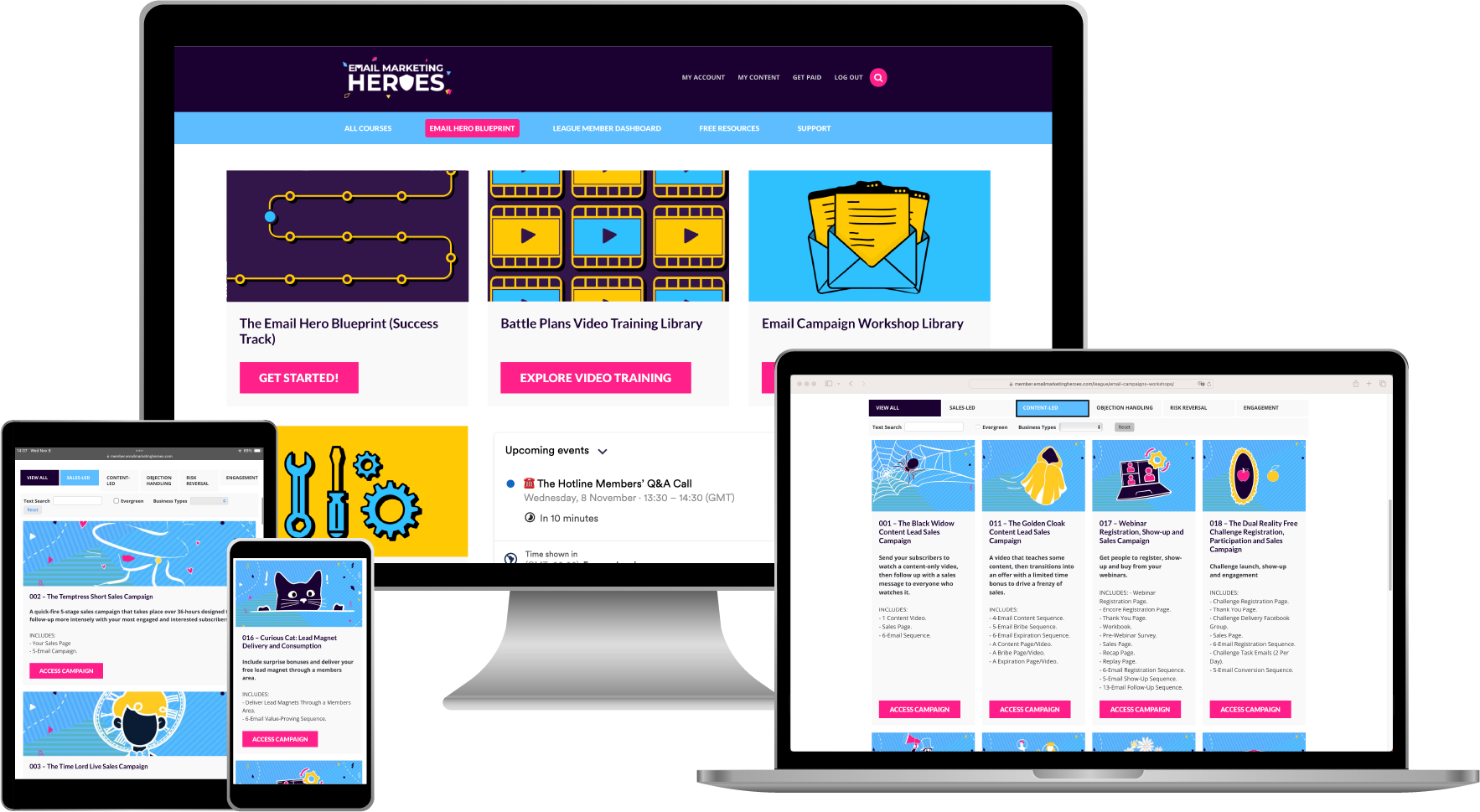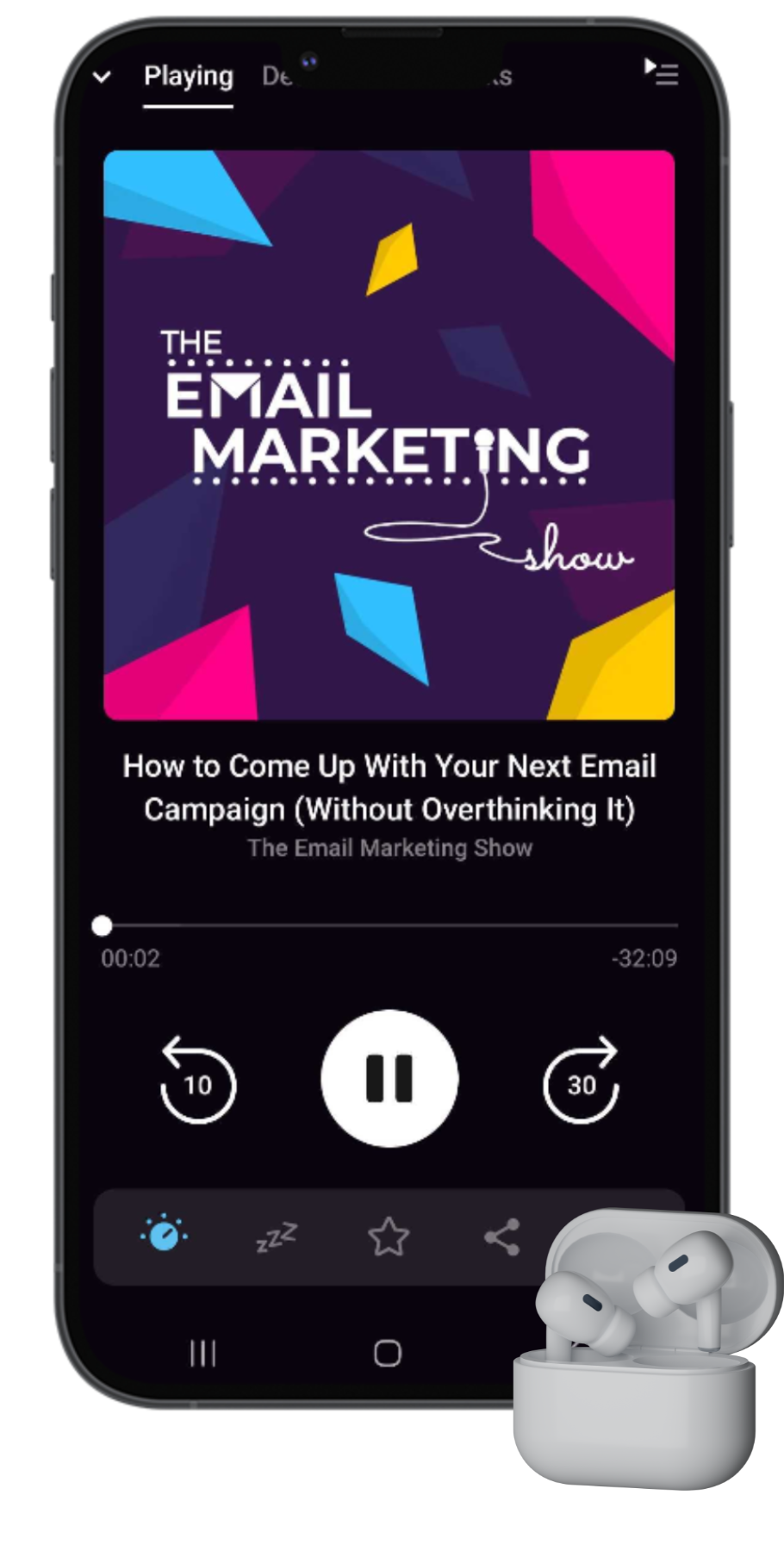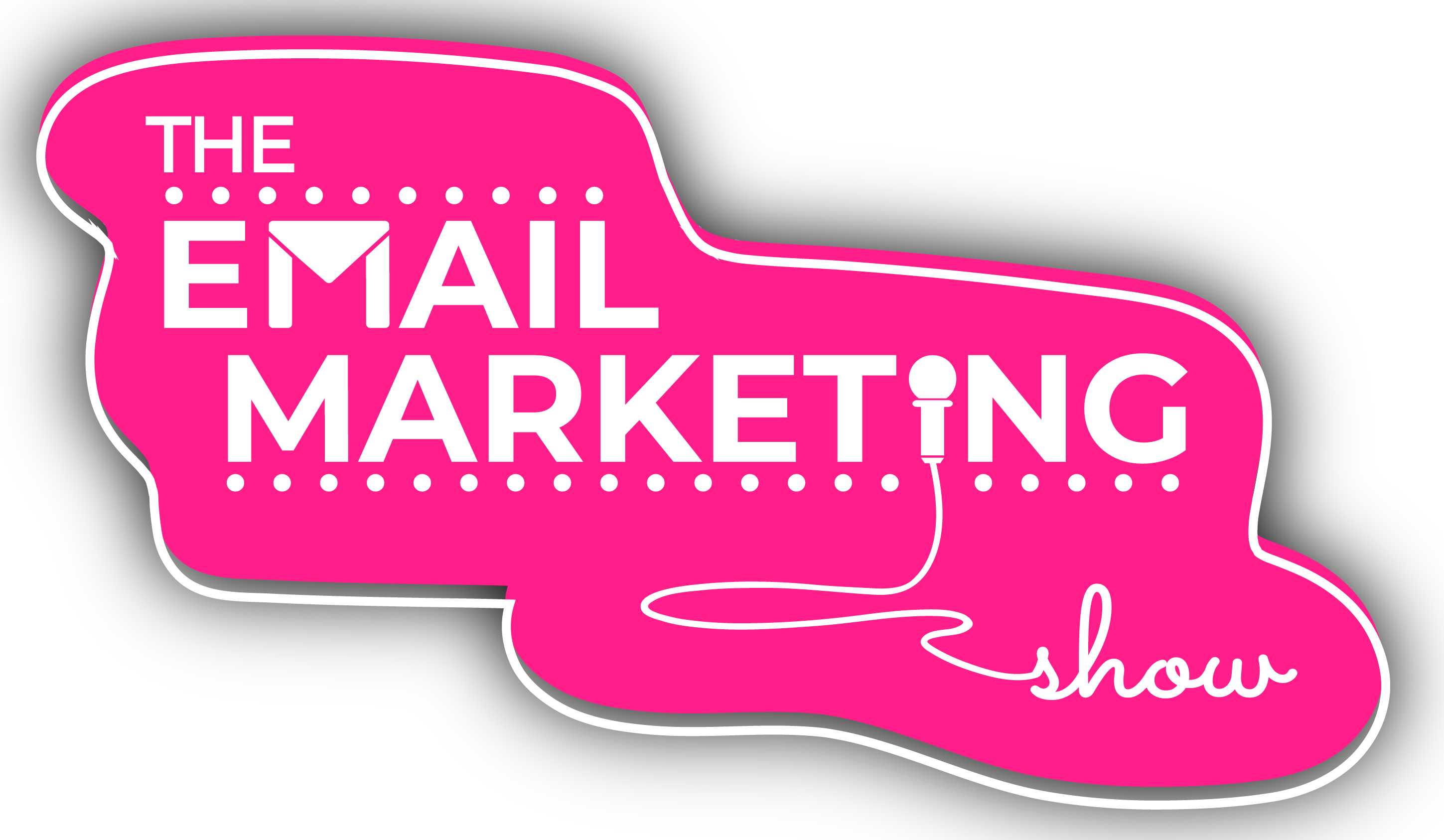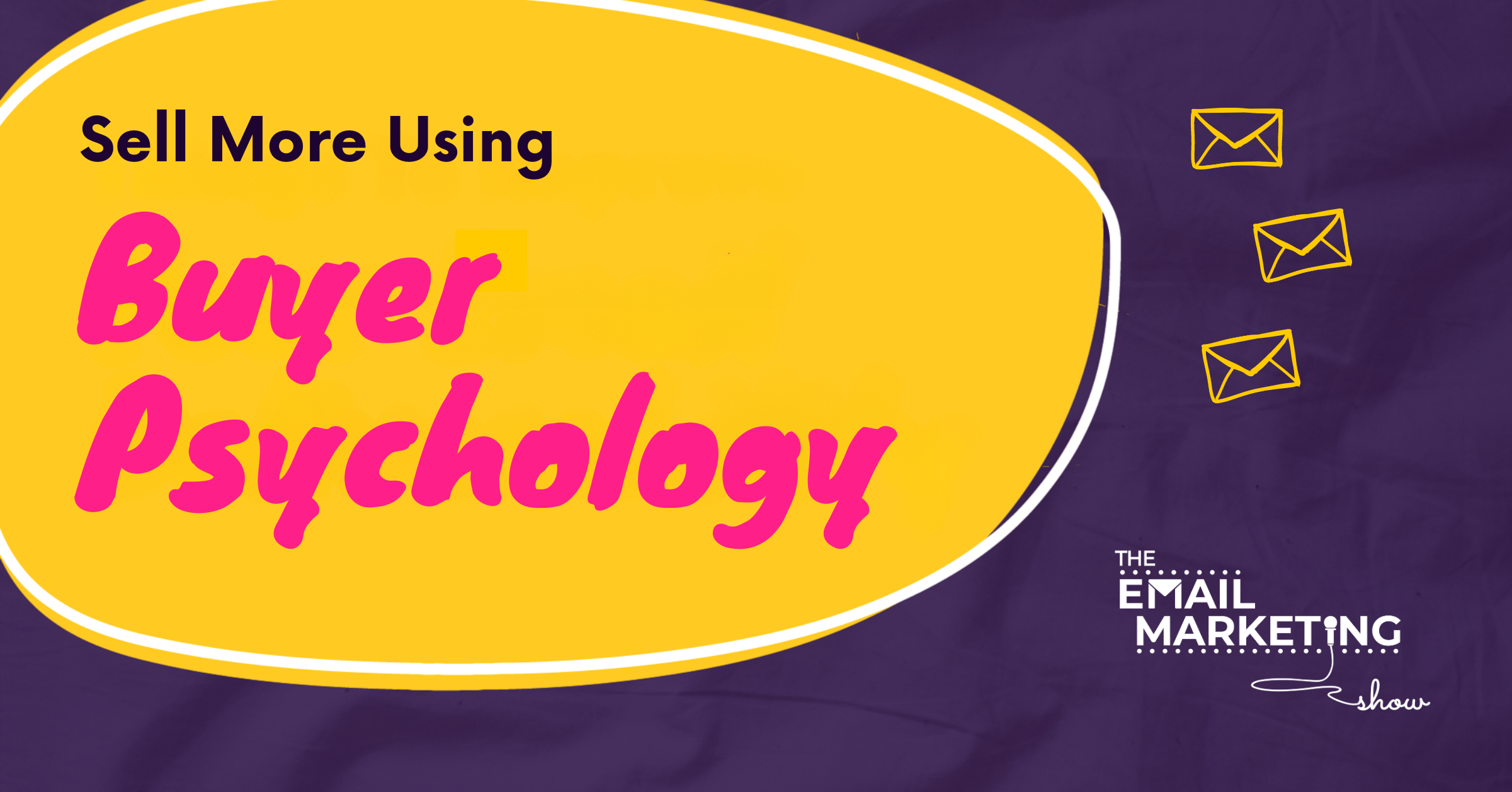
How To Sell More By Tapping Into The Power Of Buyer Psychology In Your Email Marketing
How can you make your email marketing more effective? How do you sell more? By using buyer psychology in your email marketing.
We're Kennedy and Carrie, and we're sharing all the good stuff about that.
Ready? Then buckle up!
SOME EPISODE HIGHLIGHTS: (0:30) Want to carry on with the conversation? Join our FREE Facebook group. (1:25) Share stories. (7:58) Address people as if they're already your customers. (11:05) Tell people what to do next. (13:55) Share social proof. (19:34) Use scarcity and urgency. (25:23) Join The Email Hero Blueprint. (25:58) Subject line of the week.
Share stories
As business owners, we always worry about being too salesy, but people are looking for excuses and reasons to buy! So let’s stop apologising for selling because people love to buy. And one of the first psychology-based strategies you can tap into to make selling more fun and your email marketing more effective is to immerse your audience in stories.
Think about the first person who wanted to sell men's aftershave on TV. How would they describe the scent? You wouldn't create an ad talking about the chemicals or smells the aftershave is based on – that wouldn't work! The way to sell intangible things is to sell a story. (Or to hire David Beckham to do so for you).
On a neurological level, stories take up more space in our brains. They re-wire our brains by touching their different parts – not just the logic side. A story evokes smells, sights, sounds, memories, etc. It makes something immediately more memorable because we can emote with stories but not facts.
When we're told a story, we want to feel like we're part of it. That's why when we watch a movie we empathise with the characters and feel how they're feeling. Because we put ourselves in a first-person position, and that's something that doesn't happen when you're only sharing facts.
Address people as if they're already your customers
Another strategy is to write to your audience assuming they're customers who have already bought from you. You do this by saying something like, “If you’re interested, grab this training from inside the members’ area”. What happens if someone reads this and isn't a member yet? They’ll consider joining your membership or buying your course because they want what you described. So assume that people bought from you already – they're already ‘in’.
You can also do this by showing them what happens next. For example, tell them what happens once they buy from you. Is there a video they're going to watch? If they want that, they need to ‘get through the gate' and buy first. So instead of using phrases such as “see you on the inside”, say “here's what you're going to see when you're inside”. This reduces people’s anxiety and uncertainty and removes friction from joining. If you can, even show them the members’ area – give them a virtual tour to prove that what you're talking about exists. Speak to them as if they’re already a part of your crowd.
Tell people what to do next
Tell people what action they should take after reading your emails. Do you want them to click on a link and watch a video? Do you want them to go and comment on a post? Humans want to know what to do next. Plus, training them to take the next action establishes leadership, authority, and expertise.
If you email your list without ever making an offer, you create expectations that what you send are cool articles full of value but nothing more. If you suddenly ask them to buy something, it's not going to work because that's not the relationship you built with your audience. A behaviour change comes across as jarring – and not in a good way!
Instead, from the beginning of your relationship with your subscribers, train them to buy. Show them that your emails are going to be great. But at the same time, teach them there will be links, and people should click on those links because they'll find something interesting and valuable there. Creating this behaviour is at the core of bias psychology. Supermarkets do this too. They know what patterns we walk when going through their store – they understand and influence our buying behaviours, and that's what you also want to do in your emails.
So from the beginning of their relationship with you (i.e. from your welcome email) train your subscribers to click on links. Even when you send them your lead magnet in exchange for their email address, make them click on a link! Teach them that clicking on your links is safe and good. Because if you don't, they won't suddenly start doing it months down the line.
Share social proof
One of the things we’re doing when we’re selling anything is to give people hope. You’re not just selling an outcome – you're selling the hope that this solution will get them what they want, whether it’s being better at something or escaping the pain of anything. You’re selling people hope your solution will solve their problem and get them closer to their goal. This is key if you want your audience to move forward with you – they need the hope they can do it. Until hope exists, nothing else does. And social proof gives people hope.
Another reason to share social proof is that people want to fit in. Everyone wants to know they're making a safe decision or a ‘trendy’ one. When you pass two restaurants side by side, you'll be sceptical about the empty one and want to go to the one with a queue outside the door. It’s tried and tested and vouched for. That’s why people often ask for recommendations on social media before buying anything – they want confirmation that something's good and that they won't be scammed if they buy a particular product.
So when anyone in your audience asks you questions privately about your products or services (wherever possible) answer them ‘publicly’ in an email or social media. Do it the right way without violating someone’s privacy, but show people you’re having these conversations. It establishes you as an authority – it's social proof people are asking you questions, and it shows them you know what you’re talking about.
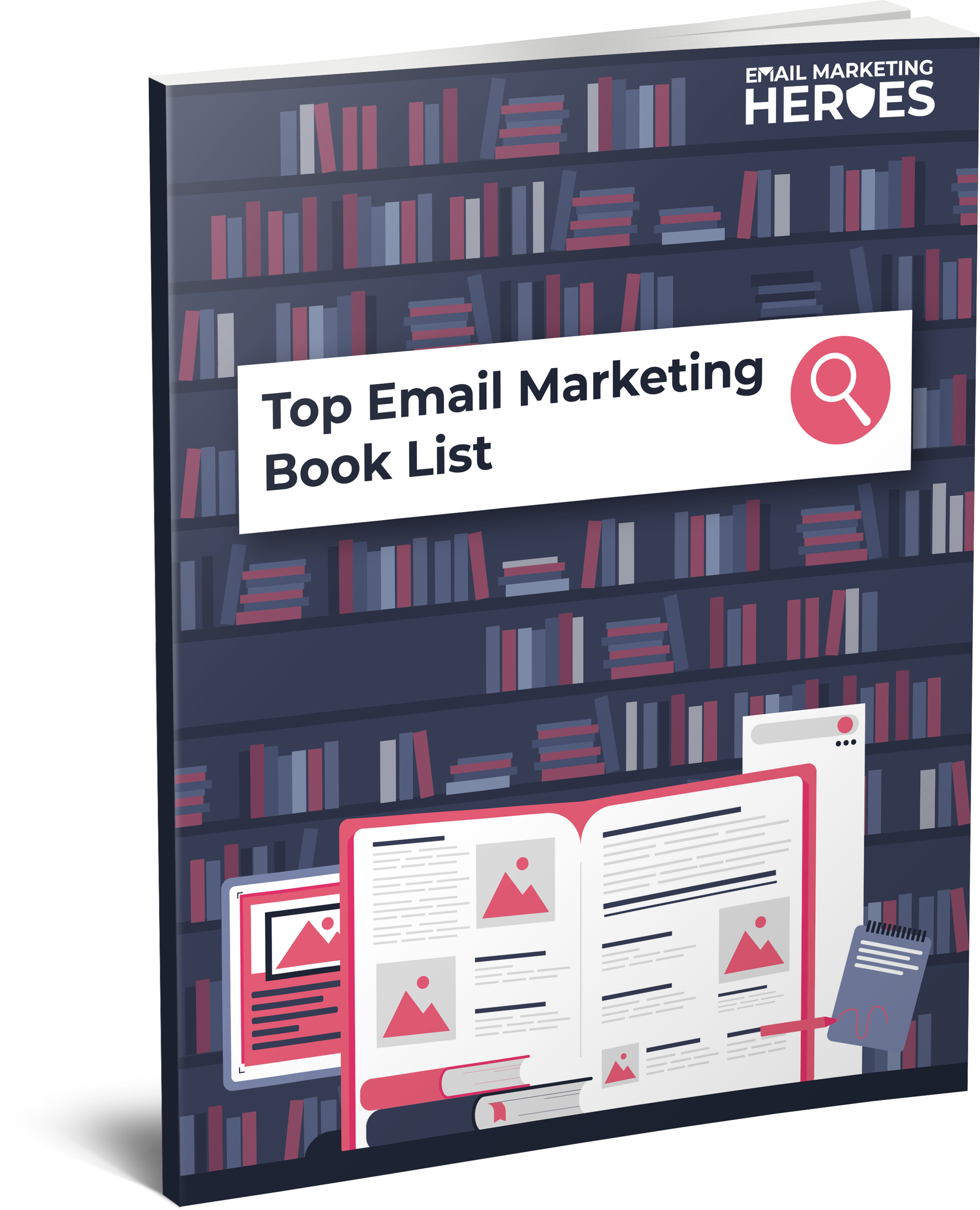
The Top 10 Books To 'Power Up' Your Email Marketing
10 book recommendations that will improve all areas of your email marketing (including some underground treasures that we stumbled upon which have been game-changing for us).
Use scarcity and urgency
As consumers, we always assume we have more time to do something – or, specifically, to go and buy anything. Because of that, we don't buy now – we buy later or when the time is right. But when you don’t ask for the sale, you don’t ask for a decision. The only way someone's going to decide to buy from you right now is if you're at the top of their priority list. So find ways to move yourself up on someone’s priority list and ask them to make a decision now. If they’re going to say no to you, you want them to do so as quickly as possible, so you can move on.
You have two ways of prompting people to prioritise what you do and make you number one on their list:
- Use urgency. This means your offer is only available for a short period. After that, it's going to run out.
- Use scarcity when there's a limited number of products available.
While they can both help you move things up someone's priority list, urgency and scarcity are different and not interchangeable! You don’t have to use them both, but when you do, do it authentically and keep your promises because people always look for evidence that you do what you said you'd do. So if you say an offer is only available until a certain day and time, don't extend it. Keep your word – if someone misses a deadline, it’s gone. Keep your integrity and respect the people who bought from you within the deadline.
Join The Email Hero Blueprint
If you want to learn more about these strategies and get the exact campaigns that use urgency and scarcity and have all the other buyer psychology principles built into them, check out our flagship programme – The Email Hero Blueprint. It has more than 45 different email campaigns, and it allows you to promote your products to your audience in a lot of different ways.
Subject line of the week
This week’s subject line is “Shhhh: invitation”. Initially, when Kennedy wrote this subject line, he just had the word “Invitation”. But the subject line was a bit flat and didn't jump out. So he added the ‘Shhhh’ to make it less boring and give it an extra lift in someone’s inbox. It sounds casual enough, and it got us good open rates. So try it out!
Useful Episode Resources
Related episodes
How to Do Deadlines Well and Ethically.
Comedian’s Secrets to Storytelling – With Kevin Rogers.
FREE list to improve your email marketing
If you want to write better emails, come up with better content, and move your readers to click and buy, here's how. Here's a list of our Top 10 most highly recommended books that will improve all areas of your email marketing (including some underground treasures that we happened upon, which have been game-changing for us). Grab your FREE list here.
Join the FREE Facebook group
Do you want to chat about how you can maximise the value of your email list and make more money from every subscriber? There's a way! Every business is different, so come and hang out in our FREE Facebook group, the Email Marketing Show Community for Course Creators and Coaches. You'll find a lot of training and resources, and you can talk about what you're up to.
Try ResponseSuite for $1
This content is sponsored by ResponseSuite.com, the survey quiz and application form tool that we created specifically for small businesses like you to integrate with your marketing systems to segment your subscribers and make more sales. Try it out for 14 days for just $1.
Join The Email Hero Blueprint
Want more? Let's say you're a course creator, membership site owner, coach, author, or expert and want to learn about the ethical psychology-based email marketing that turns 60-80% more of your newsletter subscribers into customers (within 60 days). If that's you, then The Email Hero Blueprint is for you.
This is hands down the most predictable, plug-and-play way to double your earnings per email subscriber. It allows you to generate a consistent sales flow without launching another product, service, or offer. Best news yet? You won't have to rely on copywriting, slimy persuasion, NLP, or ‘better' subject lines.
Want to connect with Carrie?
You can find Carrie on her website or at Fully Leveraged Business.
Subscribe and review The Email Marketing Show podcast
Thanks so much for tuning into the podcast! If you enjoyed this episode (all about how to use buyer psychology in email marketing) and love the show, we'd appreciate you subscribing and leaving us a review of the show on your favourite podcast player.
Not only does it let us know you're out there listening, but your feedback helps us to keep creating the most useful episodes so more awesome people like you can discover the podcast.
And please do tell us! What do you really fill your working days with if you don't spend time on email marketing? We'd love to know!

